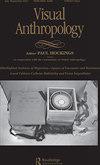为野外工作拍摄电影
IF 0.3
Q3 ANTHROPOLOGY
引用次数: 0
摘要
十年前,我在曼彻斯特大学获得了视觉人类学硕士学位,这训练了我的视觉去寻找有吸引力的图像、完美的相机角度和美丽的光线条件。但在格拉纳达视觉人类学中心的那一年,不仅是视觉困惑的一年:它还改变了我对与我共事的人和主题的人类学凝视。不用说,鉴于这段历史,我非常高兴地得知,在曼彻斯特教授纪录片实践的人Andy Lawrence终于将他多年的教学经验转化为一本图文并茂的手册,将视听研究的实践、理论和技术方面融为一体。如果你正在考虑纪录片制作,无论是否是民族志,这本书都是你桌上需要的,也是你在这个领域需要的。但我不仅推荐给从业者和对使用相机感兴趣的人,无论是在学术界还是学术界之外。它也应该在图书馆中提供,用于(视觉)人类学的教学。尽管人们一直认为视觉人类学缺乏理论,但这本实用手册恰恰教授了迄今为止缺失的相机使用、录音和编辑的核心技能。在人类学中,图像制作的行为仍然经常被简化为按下按钮的技术层面(第x页)。劳伦斯对“在实践中探索”的关注表明,还有很多东西需要学习。这本书分为五个部分,包括电影制作每个阶段的有用练习,从决定拍摄电影的最初考虑(谢天谢地,作者并不认为这是一种与写作相反的东西,而是一种补充练习),到准备、记录图像和声音,剪辑,最后是发行&这是电影制作的一个固有部分,在启动一个项目时很容易被遗忘。毕竟,它让研究成果在学院之外、在不同的屏幕上栩栩如生,这也让视觉人类学变得如此重要。正如作者自己所写,这本手册不仅适用于人类学家,也适用于任何想将民族志纪录片用于电影制作项目的人。事实上,对技术原理的详细但易于理解的解释表明,制作电影和进行人类学研究的过程在很多方面都是相似的。两者都始于一个想法或本文章由计算机程序翻译,如有差异,请以英文原文为准。
Filmmaking for Fieldwork
Doing the MA in Visual Anthropology at the University of Manchester a decade ago trained my vision to look for appealing images, the perfect camera angle and beautiful light conditions. But that year at the Granada Centre for Visual Anthropology was not only an intense year of visual enskillment: it also changed my anthropological gaze toward the people and topics that I work with. Needless to say that given this history, I was extremely happy to learn that the person teaching documentary film practice at Manchester, Andy Lawrence, had finally transformed his many years of teaching experience into an illustrated handbook that integrates the practical, theoretical and technical sides of doing audiovisual research. If you are thinking about documentary filmmaking, whether ethnographic or not, this is the book you need on your desk, and with you in the field. But I would not only recommend it for practitioners and people curious about working with the camera, both in and outside academia. It should also be available in libraries for the teaching of (visual) anthropology. Despite a lingering assumption that visual anthropology lacks theory, this is exactly a practical handbook which teaches the core skills in camera use, sound recording and editing that were missing so far. Within anthropology, the act of image-making is still too often reduced to the technical aspect of pressing a button (p. x). Lawrence's focus on “exploration through practice” shows that there is much to learn. Divided into five sections, the book includes useful exercises for every stage of film production, starting from the very first considerations about the decision to make a film at all (which, thankfully, the author does not see as something to be set against writing but as a complementary practice), to preparation, recording images and sound, editing and finally distribution – an intrinsic part of film production that is too easily forgotten when launching a project. After all, it is giving research outcomes a life beyond the academy and on diverse screens that also renders visual anthropology so important. As the author himself writes, this handbook is not only for anthropologists but for anybody who wants to use ethnographic documentary for filmmaking projects. And indeed the detailed yet easily comprehensible explanations of technical principles show that the processes of making films and doing anthropological research are similar in many ways. Both start with an idea or
求助全文
通过发布文献求助,成功后即可免费获取论文全文。
去求助
来源期刊

Visual Anthropology
ANTHROPOLOGY-
CiteScore
1.00
自引率
50.00%
发文量
19
期刊介绍:
Visual Anthropology is a scholarly journal presenting original articles, commentary, discussions, film reviews, and book reviews on anthropological and ethnographic topics. The journal focuses on the study of human behavior through visual means. Experts in the field also examine visual symbolic forms from a cultural-historical framework and provide a cross-cultural study of art and artifacts. Visual Anthropology also promotes the study, use, and production of anthropological and ethnographic films, videos, and photographs for research and teaching.
 求助内容:
求助内容: 应助结果提醒方式:
应助结果提醒方式:


